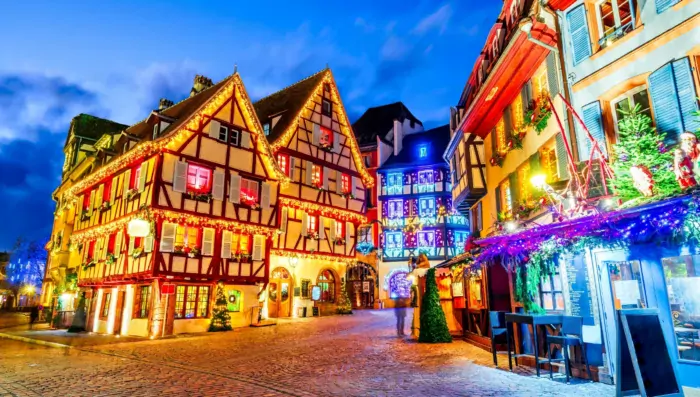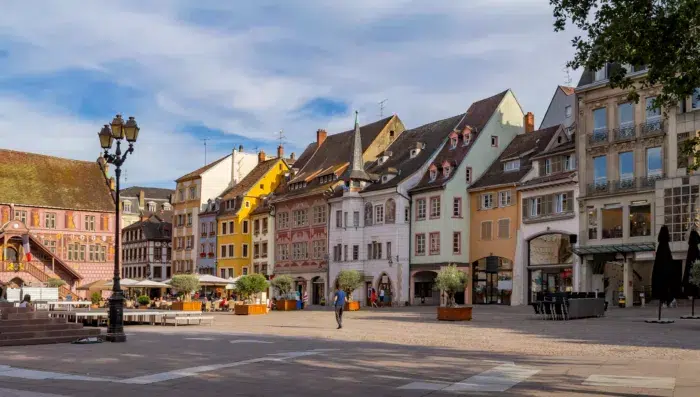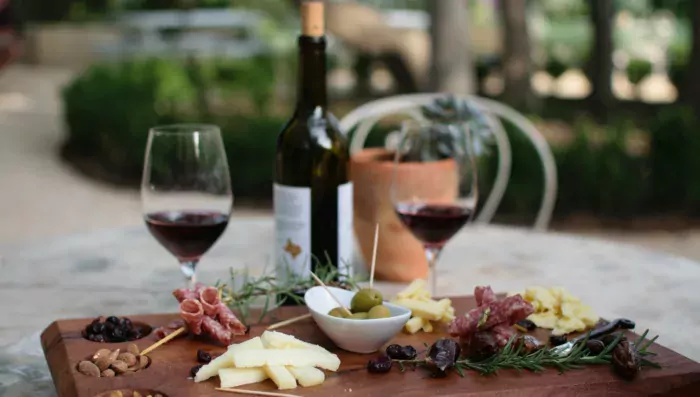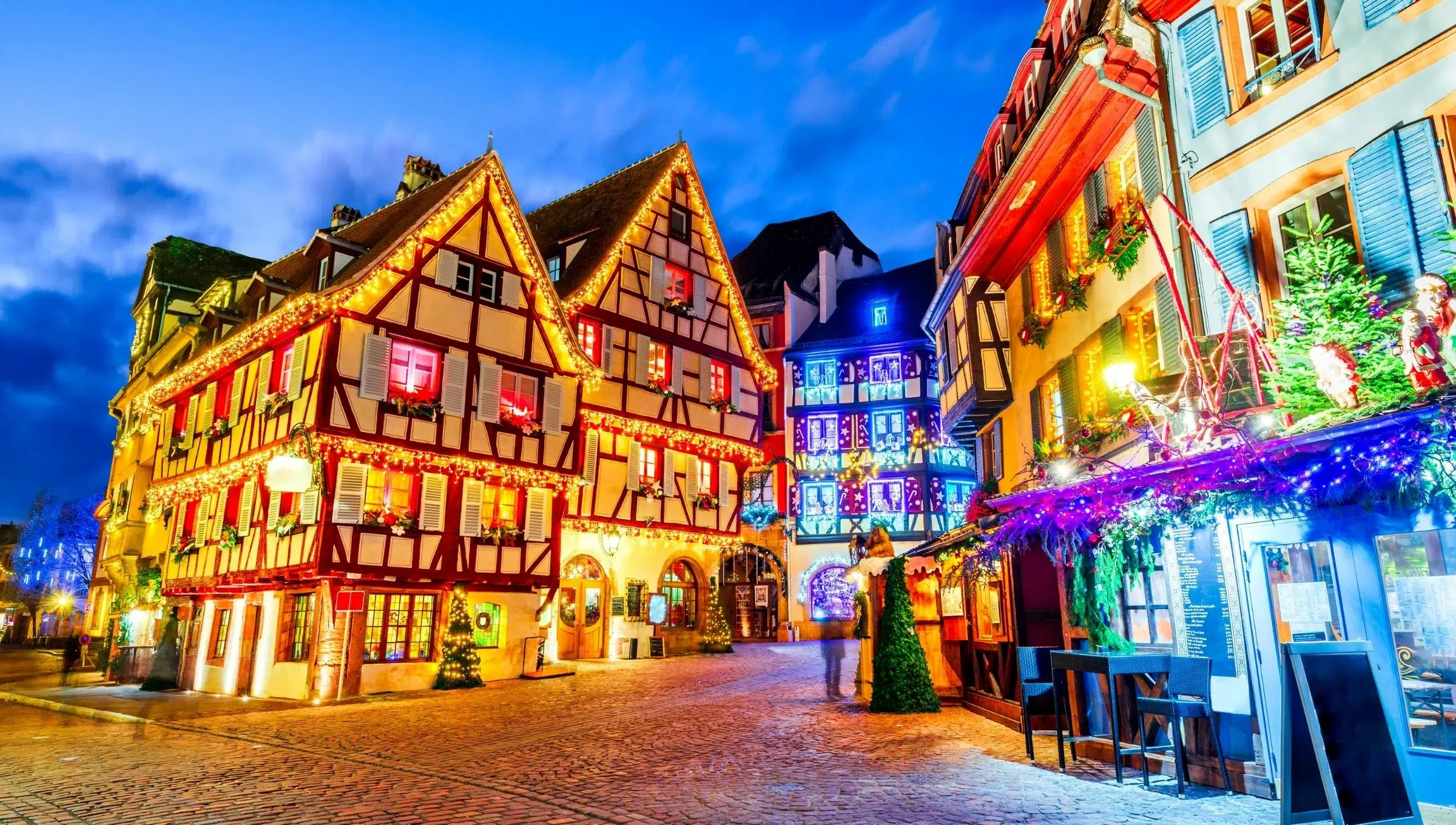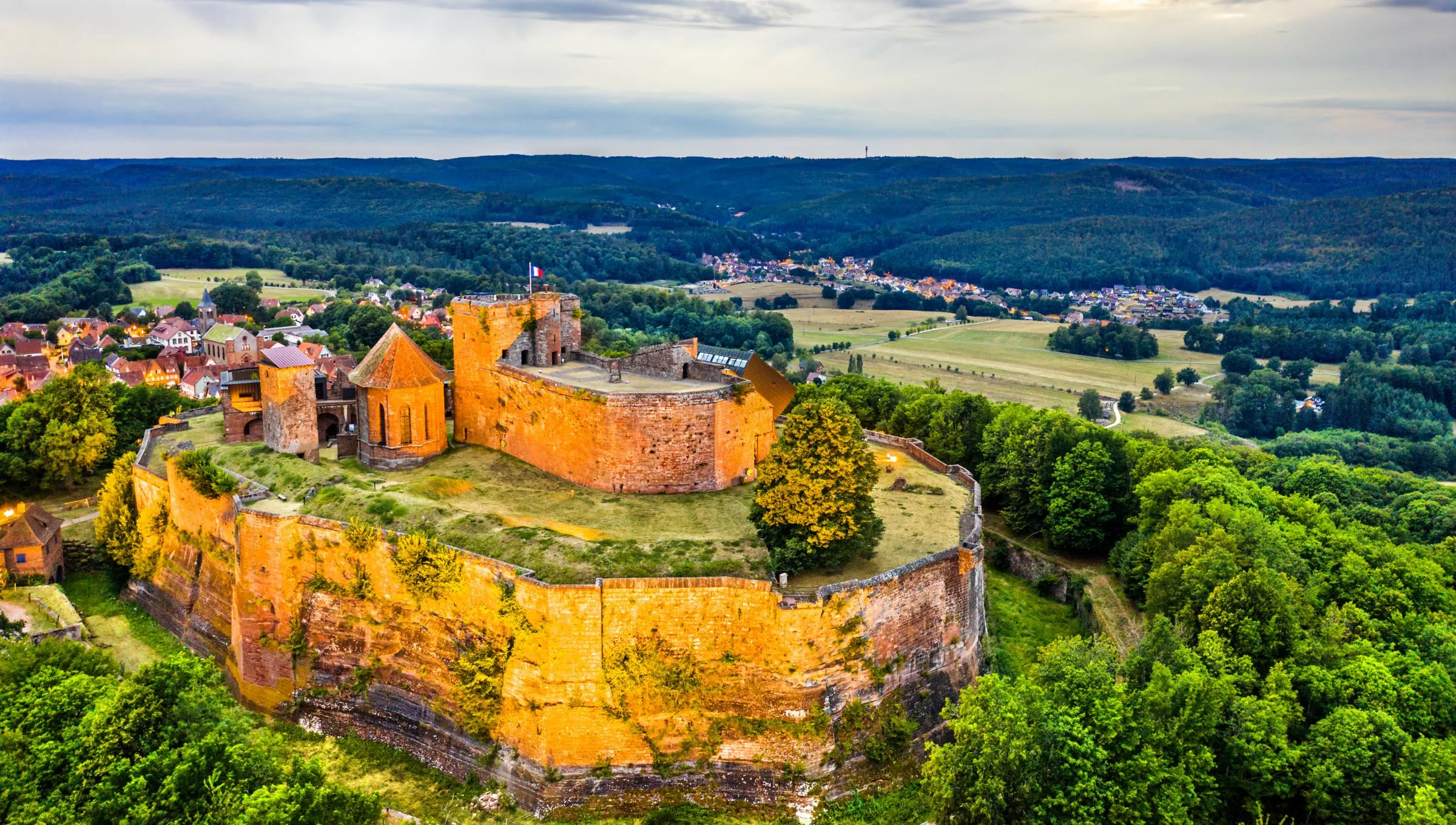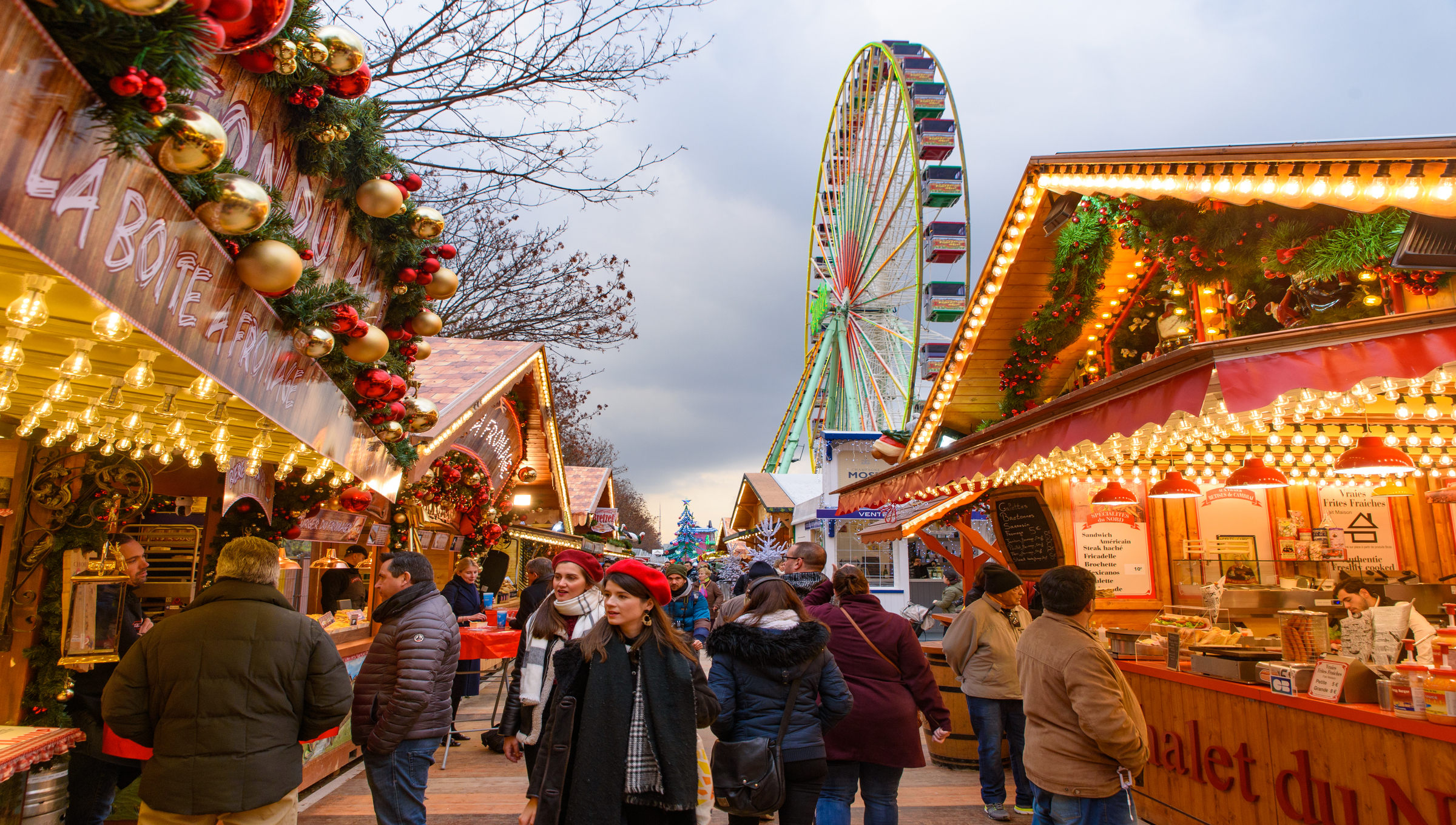Our Favorite Alsace Tours
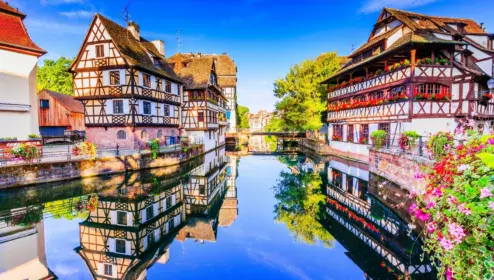
Experience the Enchanting Charms of Strasbourg!

Essence of Alsace - Colmar & Wine
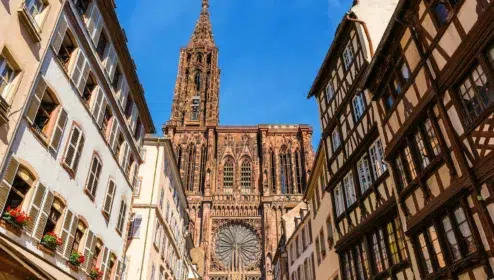
Hidden Treasures of Alsace: Wine, Castles & Craftsmanship
Alsace in Depth
Get to Know Alsace
The Alsace Lorraine Vosges region is located in north-eastern France and is famous for its wine, its colorful half-timbered houses, and its castles which sit enthroned on the summits of the Vosges mountains. The major towns in the region such as Nancy, Metz, Strasbourg, and Colmar have their own character and are a good starting point to start discovering the region. Nancy is the most typically French: elegant, classical, and home to a major Art Nouveau school. The beautiful square, Place Stanislas, has been declared a UNESCO World Heritage Site. Metz’s architecture is more varied, with Roman, medieval, and German influences visible: the St Etienne cathedral is the main attraction. Strasbourg is larger than either of these towns and much more cosmopolitan, but its half-timbered houses and numerous winstubs (wine bars) retain a traditional feel. Further south, Colmar houses the celebrated Issenheim Altarpiece and the canal district nicknamed, inevitably, Little Venice. The region boasts a multitude of museums with the real museum capital of Alsace being Mulhouse. There, you can find the fabulous National Automobile Museum which has more than 500 vintage cars, including the impossibly expensive Bugatti Royale, manufactured up the road in
History
Alsace boasts a storied history steeped in a captivating blend of influences and conflicts that have shaped its unique identity. Situated at the crossroads of Europe, this region has been coveted and contested throughout the ages, bearing witness to the passage of Celts, Romans, Franks, and Germans. Its strategic location along the Rhine River has rendered it a prized territory, leading to a tug-of-war between France and Germany over centuries. The rich tapestry of Alsace’s past is reflected in its architecture, language, and traditions, where remnants of Roman settlements, medieval castles, and stunning Gothic cathedrals stand as testaments to its diverse heritage. Despite the turmoil of wars and changing borders, Alsace has emerged as a resilient cultural mosaic, embracing both French and German influences while fostering a distinct Alsatian identity, celebrated in its art, cuisine, and warm hospitality.
Cuisine
When To Visit Alsace:
Alsace enchants visitors year-round, but the ideal times to explore this picturesque region are from April to June and September to October. Spring blooms bring vibrant colors to the vineyards and countryside, while fall dazzles with the grape harvest season, offering a chance to experience the lively atmosphere of the vendange. These seasons boast pleasant weather, with milder temperatures, fewer tourists, and opportunities to witness local festivals celebrating Alsace’s culture. Summer, especially July to August, marks the high season when the region is bustling with visitors enjoying outdoor activities and events amidst warmer weather. Winter, from November to March, blankets Alsace in a serene atmosphere and occasional snow, creating a magical ambiance ideal for exploring festive Christmas markets and enjoying cozy winstubs. Whether embracing the vibrancy of harvest or the charm of snowy landscapes, Alsace beckons visitors throughout the year to experience its varied delights.
Logistics:
By plane: Strasbourg Airport serves as a gateway to Alsace, connecting to various European cities.
By train: High-speed TGV trains link Strasbourg to Paris in around 2 hours and 20 minutes, providing a convenient transportation option.
By car: Driving to Alsace from Paris takes approximately 4-5 hours, allowing travelers to explore the picturesque countryside and charming villages along the way.
Experience Alsace

Alsace Wine Route
Embark on a picturesque journey along the Alsace Wine Route, a scenic trail that winds through charming vineyards, picturesque villages, and historic towns. Sample world-renowned wines such as Riesling, Gewürztraminer, and Pinot Gris while exploring family-owned wineries and cellars. The route not only offers a delightful gastronomic experience but also showcases the region’s stunning landscapes and rich viticultural traditions.
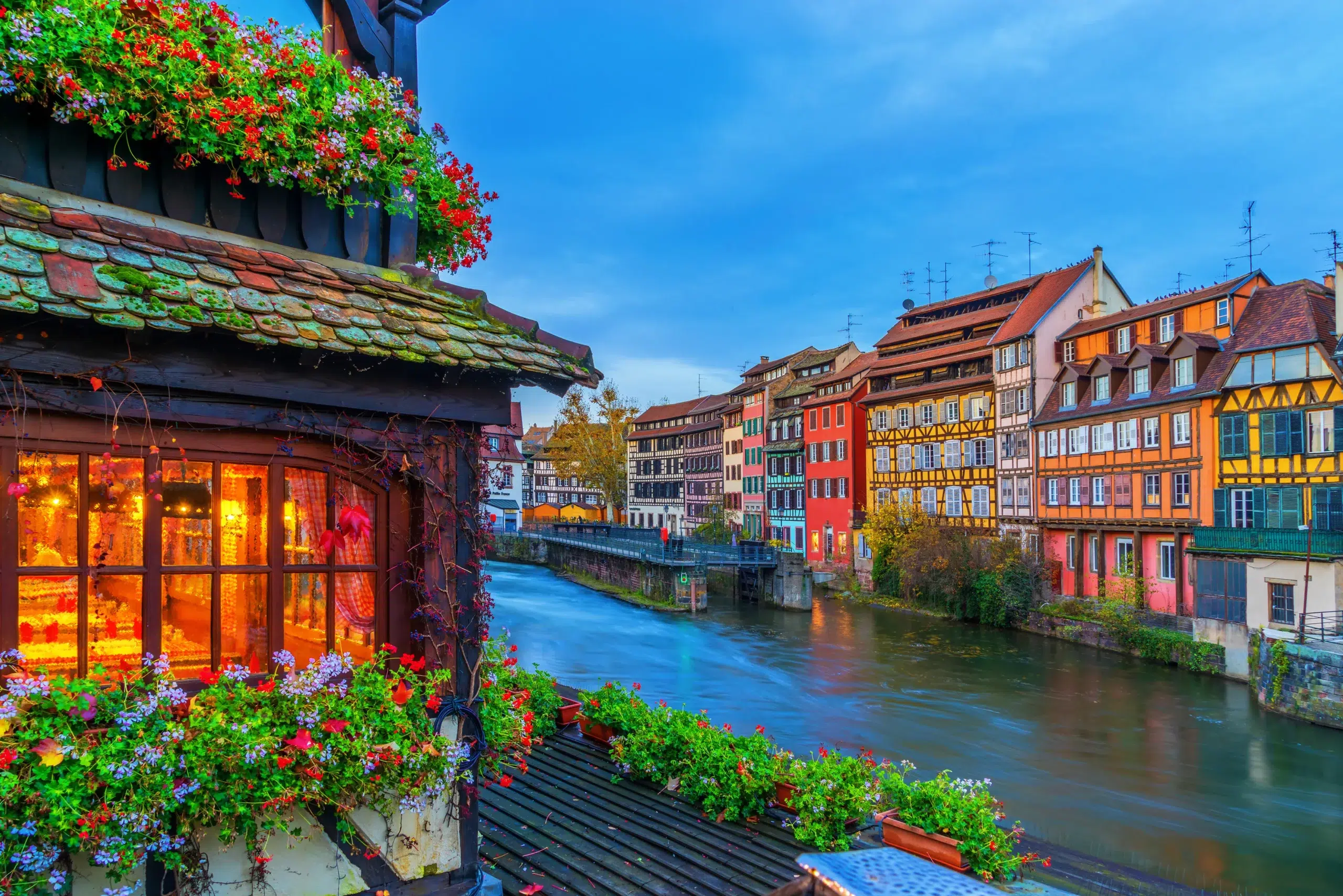
Petite France, Strasbourg
Lose yourself in the enchanting district of Petite France in Strasbourg, characterized by its cobblestone streets, timber-framed houses, and scenic canals. This historic neighborhood, a UNESCO World Heritage site, exudes charm and tranquility. Admire the half-timbered buildings adorned with colorful flowers, stroll along the waterways, and savor Alsatian cuisine at charming local eateries. The area’s blend of history, architecture, and scenic beauty makes it a must-visit destination in Alsace.
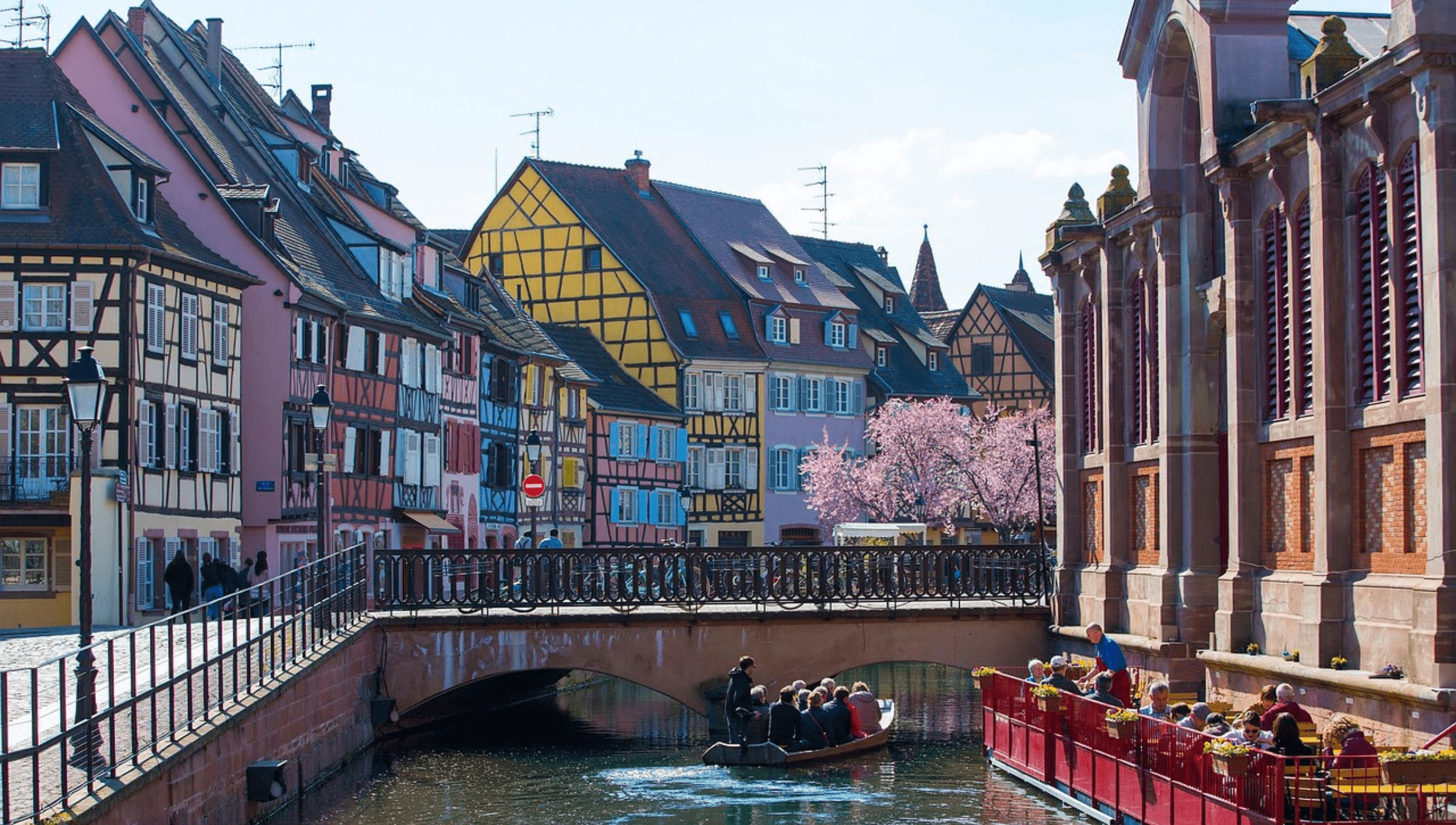
Little Venice, Colmar
Immerse yourself in the fairytale-like ambiance of La Petite Venise in Colmar, often referred to as “Little Venice.” This picturesque quarter is characterized by its charming canals, colorful half-timbered houses, and flower-lined streets reminiscent of a storybook setting. Visitors can take a leisurely boat ride along the canals to admire the enchanting scenery or explore the narrow alleys on foot, discovering quaint cafes, artisanal shops, and historic landmarks. La Petite Venise exudes a romantic and whimsical atmosphere that captivates visitors throughout the year.
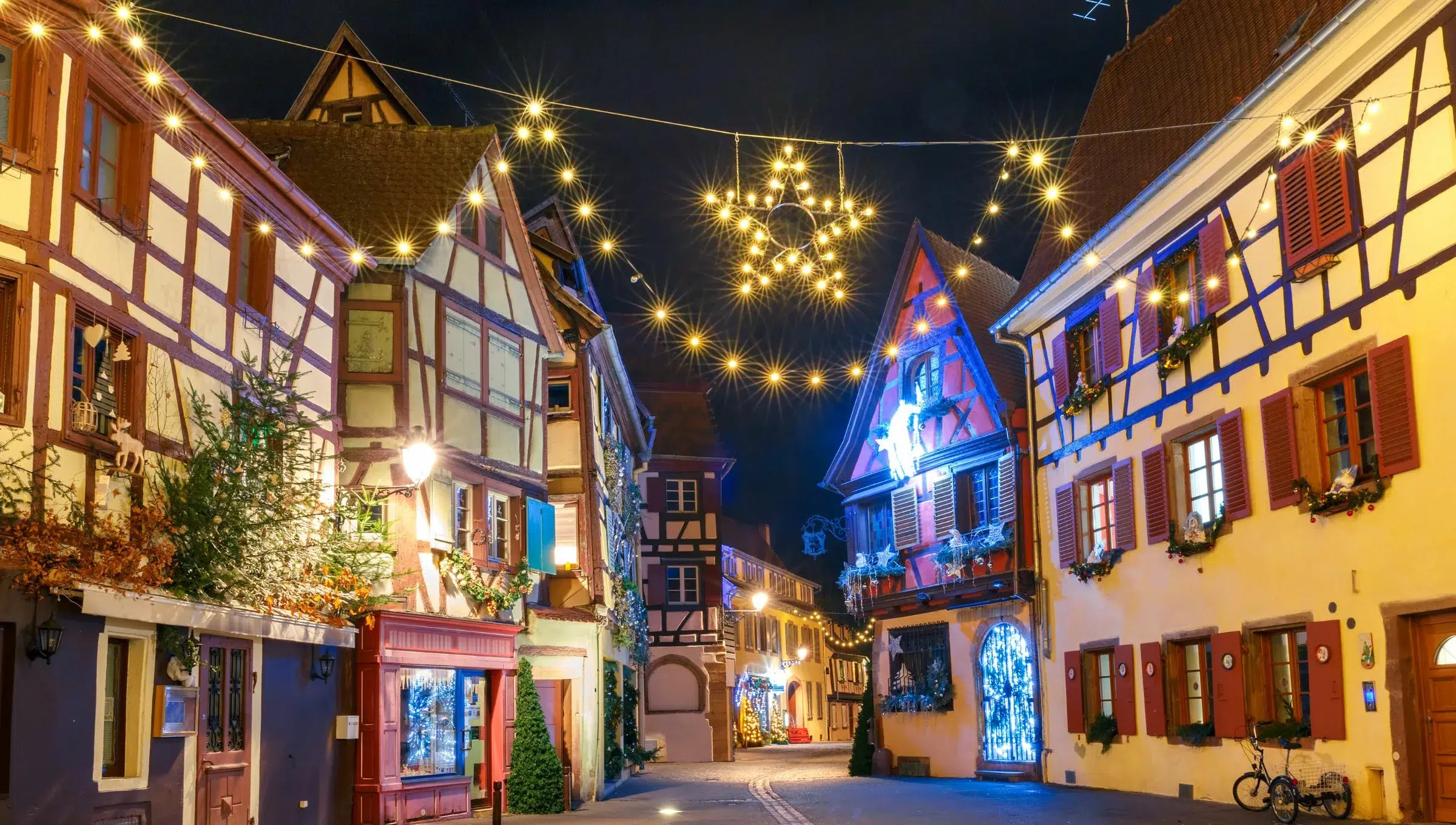
Alsace Christmas Markets
Experience the magic of the renowned Christmas markets that adorn various towns and cities across Alsace during the holiday season. These markets, known for their festive spirit and enchanting atmosphere, offer an array of traditional crafts, local delicacies, and seasonal decorations. Strasbourg’s Christkindelsmärik, one of the oldest and most famous Christmas markets in Europe, showcases the region’s Christmas traditions amidst beautifully decorated stalls and twinkling lights. Visitors can indulge in mulled wine, gingerbread, handcrafted ornaments, and other delights while soaking in the merry ambiance and joyful celebrations that define the Alsace Christmas markets.
Hotels & Villas
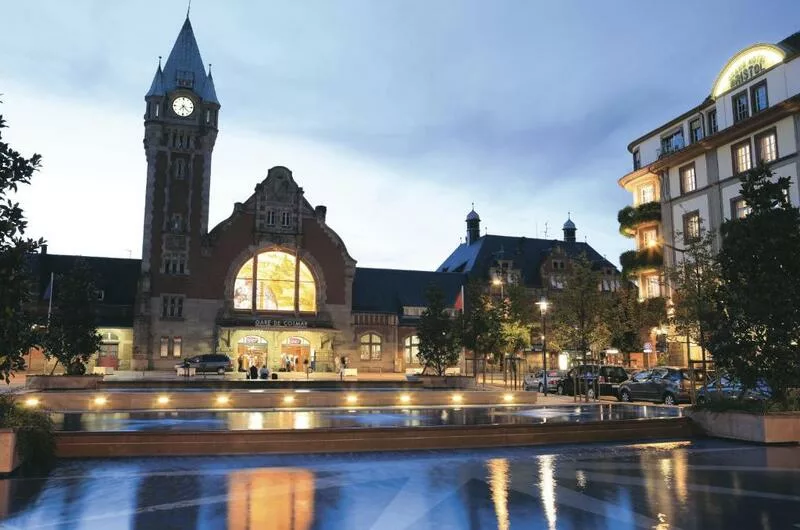
Grand Hôtel Bristol Colmar
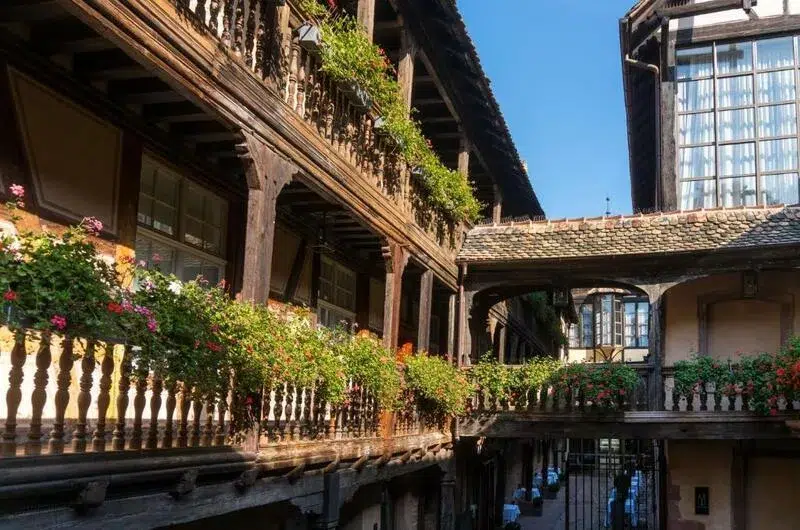
Cour du Corbeau

Hôtel d'Haussonville

Le Domaine de la Klauss Hotel Spa

La Maison des Têtes

Hotel Regent Petite France
What Our Clients Are Saying
Why French Side Travel?
Award-Winning Expertise
Local Knowledge, Tailored to You
Authentic French Immersion
Round-the-Clock Support
Worry-Free, Tailor-Made Travel
Our Partners and Awards


